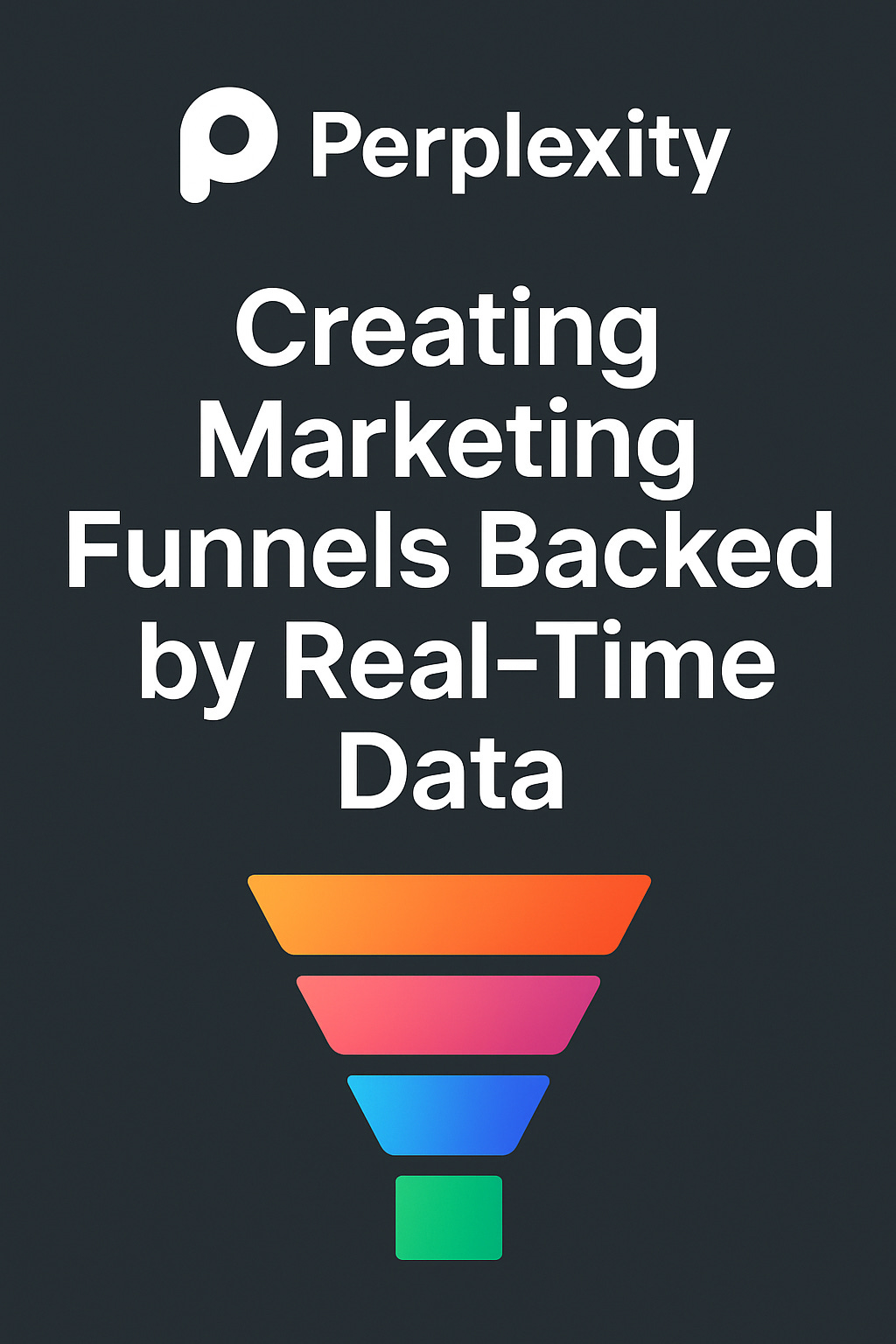Creating Marketing Funnels Backed by Real-Time Data
Written by Fred Ferguson – GeezerWise on Substack at www.geezerwise.com #Perplexity
Most marketing funnels are built on assumptions — tidy diagrams of how customers should behave.
But here’s the reality: real customer journeys are messy. They zig, they zag, and they almost never follow the path you mapped on your whiteboard.
The problem with traditional funnels? They’re based on theory, not reality. Stages that make sense to you may have nothing to do with how people actually discover, research, and decide to buy. That’s why prospects leak out at every stage.
How Perplexity flips the funnel
Perplexity lets you see what’s really happening inside your customers’ decision process — then build your funnel to match.
You can research:
Real discovery triggers — What events or problems start the search?
Initial research habits — Where do they go first? Who do they trust?
Decision factors — What creates urgency? What tips the scale?
Step 1: Map real discovery points
Find out where people first encounter your product type. Is it an ad, a friend’s post, a crisis moment? Your top-of-funnel strategy should start there.
Step 2: Track the early research stage
What do they Google? What videos do they watch? Who do they ask for advice? Be in those places.
Step 3: Nail the consideration stage
Learn what comparison points matter most — and deliver content that makes your offer the obvious choice.
Step 4: Identify decision triggers
What’s the “final straw” that makes them buy? A deadline? A guarantee? Social proof? Build that into your bottom-of-funnel moments.
Step 5: Fix leaks with friction analysis
Where do they stall? What unanswered questions or doubts stop them? Patch those gaps.
Step 6: Invest in influential touchpoints
Know which interactions matter most so you can double down on them.
Step 7: Time it right
Different stages take different amounts of time. Your follow-ups should match the natural pace of the buyer — not your sales quota.
Step 8: Personalize by segment
Different customer groups move differently. Tailor your funnel to match each one’s behavior and needs.
Step 9: Build post-purchase momentum
Retention and referrals aren’t an accident. Serve them well after purchase and they’ll feed your funnel with new prospects.
Step 10: Recover lost leads
Not everyone buys on the first pass. Use re-engagement strategies that fit their journey stage and timing.
Bottom line:
A funnel built on actual behavior feels natural to your customers — and that means fewer leaks, higher conversions, and better relationships.
With Perplexity, you’re not guessing. You’re building a funnel that works because it reflects the way your audience really buys.
💌 Know someone who’d appreciate this? Subscribe at GeezerWise.com to get future letters straight to your inbox.


